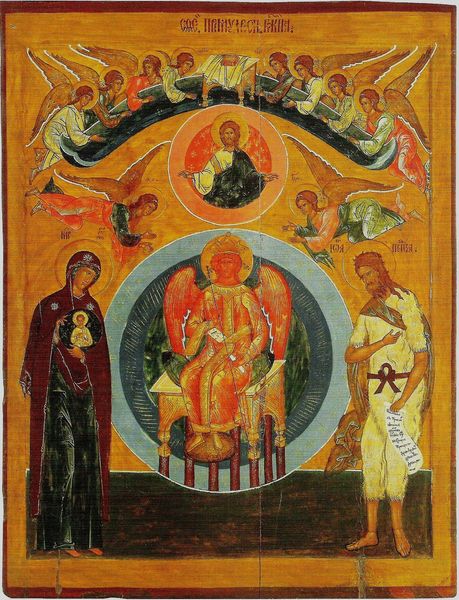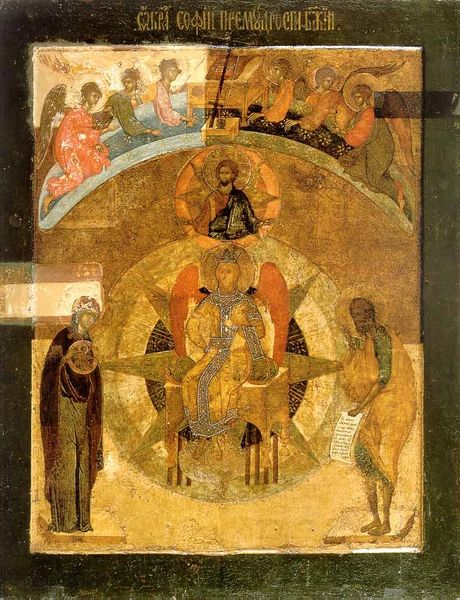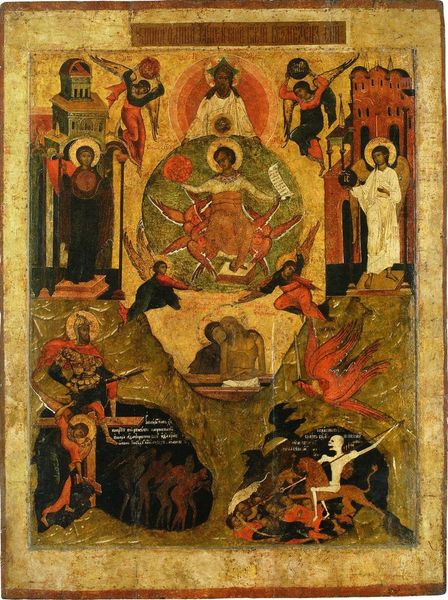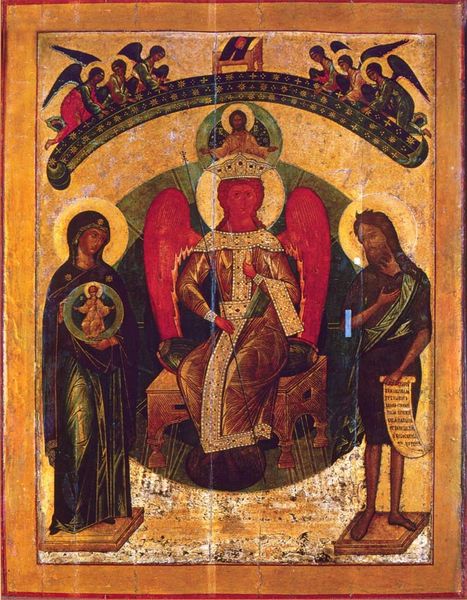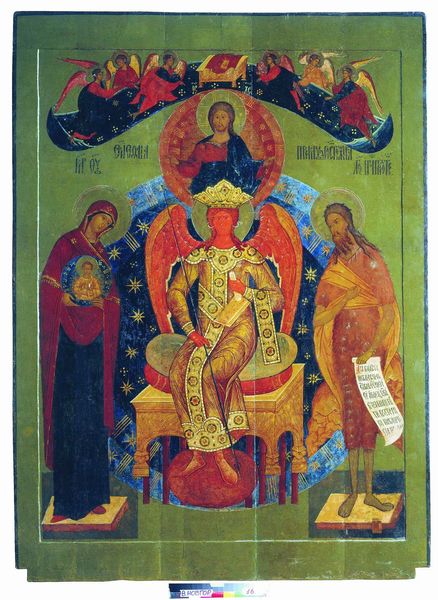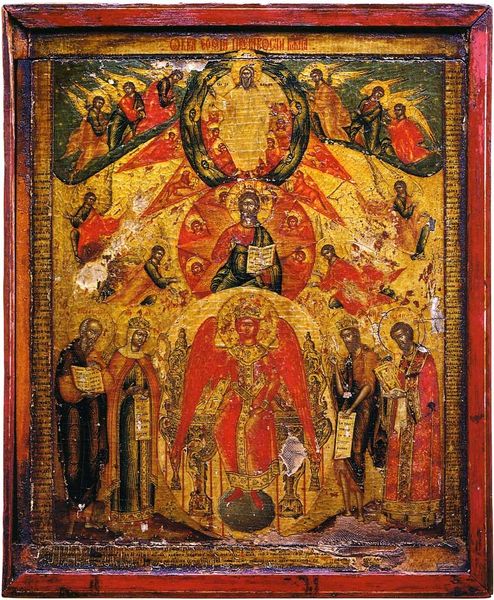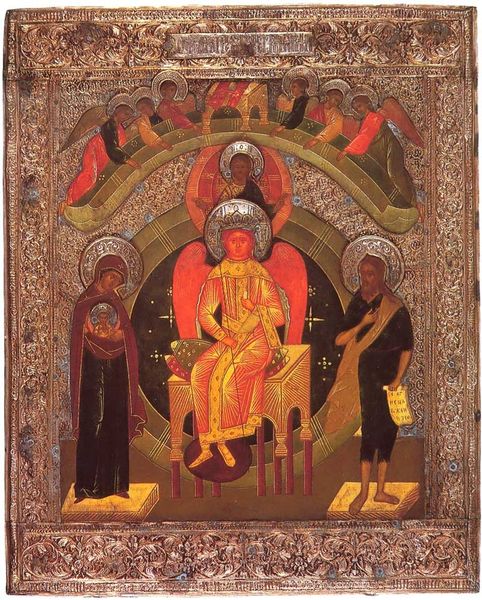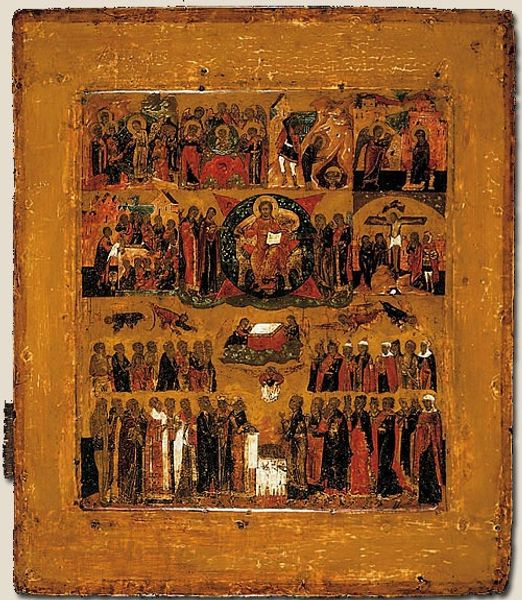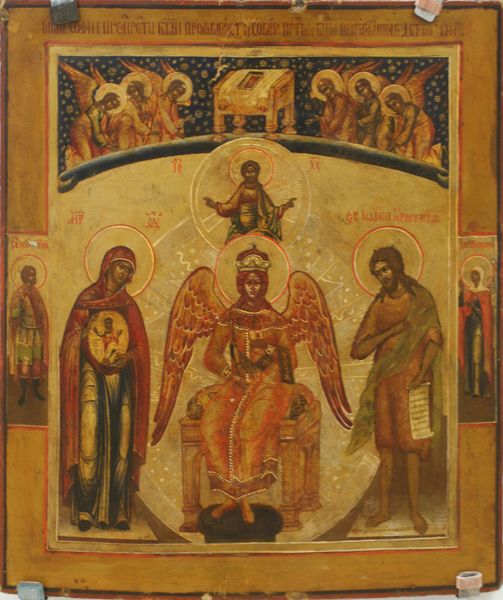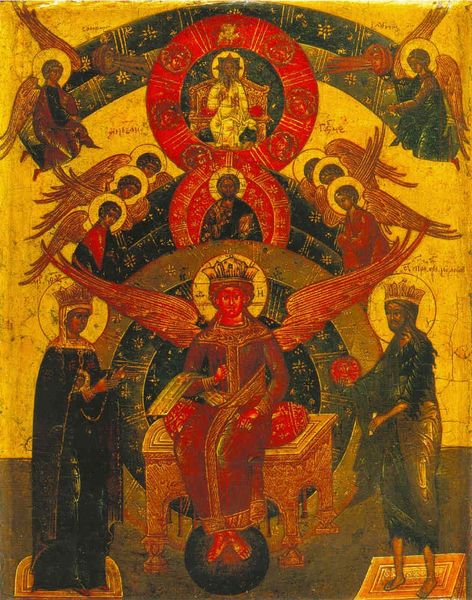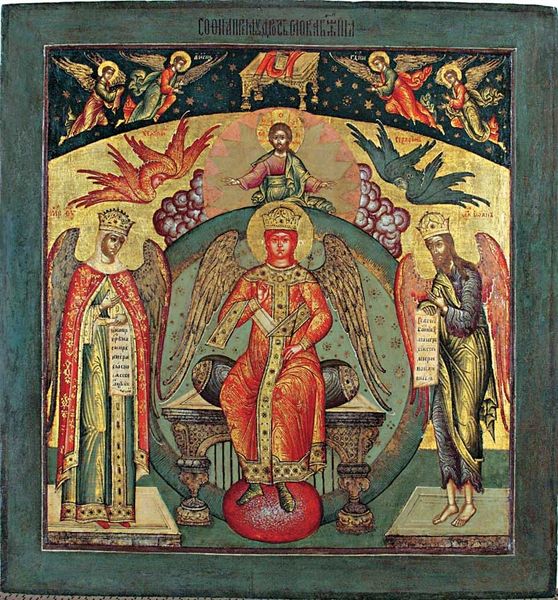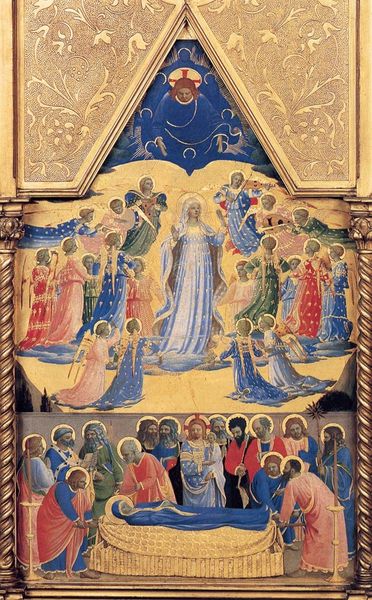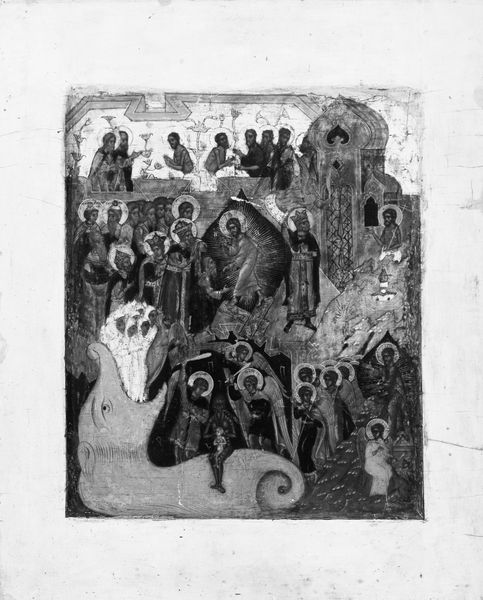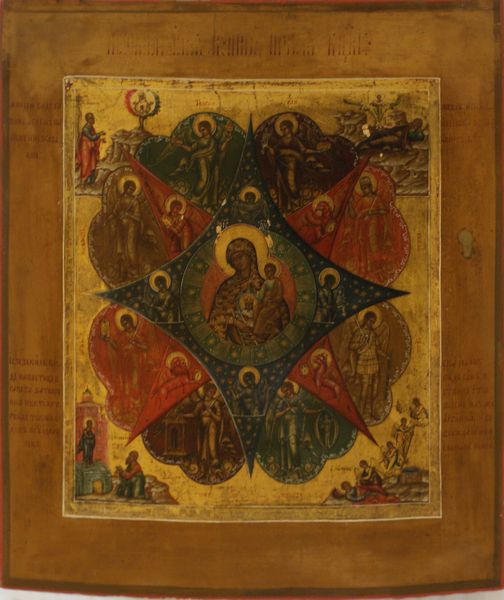
tempera, painting
#
byzantine-art
#
allegory
#
tempera
#
painting
#
pattern
#
figuration
#
arch
#
christianity
#
line
#
symbolism
#
pattern repetition
#
miniature
#
christ
Copyright: Public domain
Curator: Oh, I’m immediately captivated by the symmetry and the sort of ethereal quality of this tempera painting. It's almost like looking into a sacred, gilded mirror! Editor: This is Nicholas Roerich’s, "Throne of the invisible God," created in 1909. Roerich was deeply interested in symbolism and spirituality. Here we see Byzantine influences mingled with Russian artistic traditions. It depicts an allegorical scene steeped in Christian imagery, yet somehow feels simultaneously universal in its call to the divine. Curator: It's wild, isn't it? Like stepping into a storybook where every figure is an angel and every object, a golden secret. I get this sense of awe and humble devotion. The kind that crawls up your spine and whispers, "Look closer." Editor: Indeed, the procession of figures carries that sense of unified purpose. However, let's also remember the complex socio-political context. Roerich's spiritual quest resonated with an era of rapid social change in Russia. Such imagery provided a refuge for some. For others, it signaled a kind of passive acceptance in the face of injustice, an otherworldly distraction from worldly struggles. Curator: True. You either find it meditative, or… mildly maddening. I confess the precision, the perfect alignment, tickles a weird nerve of calm. Maybe the quest for absolute peace can get too neat, but I see your point about its context; it either feeds the fire or calms the flame. I guess it's open to the eye of the beholder and their baggage, huh? Editor: Exactly! The layered composition reflects not just an artistic style, but the deeper philosophical questions of the time—questions about faith, power, and collective identity in the face of profound societal upheaval. So, while beautiful, it's certainly not ideologically neutral. Curator: It feels, simultaneously like a timeless echo of a spiritual truth. Art, the constant tension of being born in an age, yet attempting the infinite, no? Well said. What do you carry forth from it? Editor: I leave contemplating art's entanglement with culture. Beauty can beckon, but we mustn't ignore the history clinging to its wings. Curator: Me too. Perhaps "the invisible God" asks, and insists, on being grounded in a visible reality after all, however you feel moved to approach it.
Comments
No comments
Be the first to comment and join the conversation on the ultimate creative platform.
